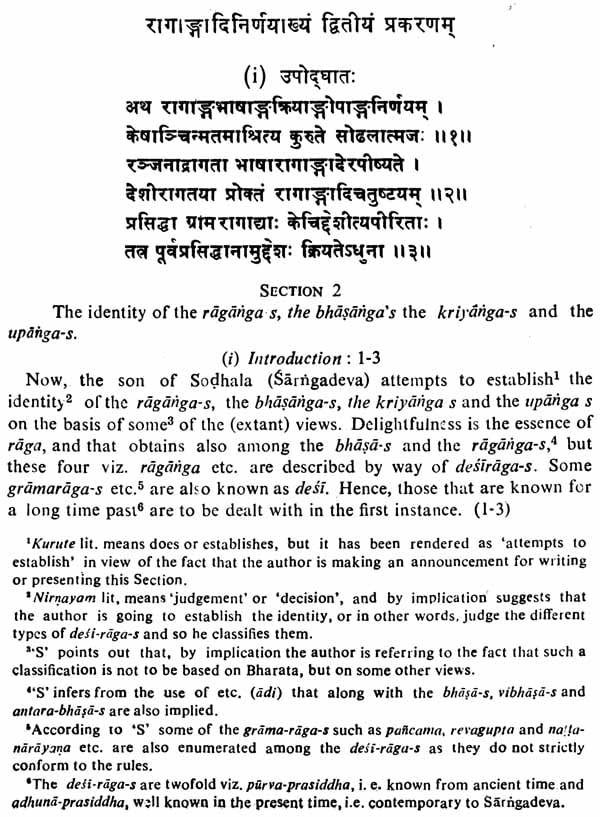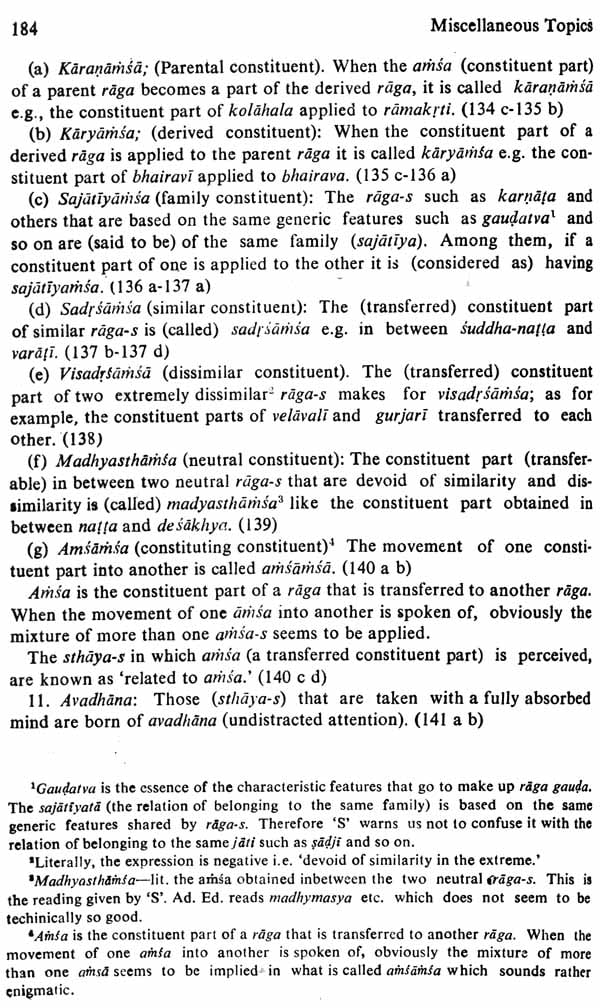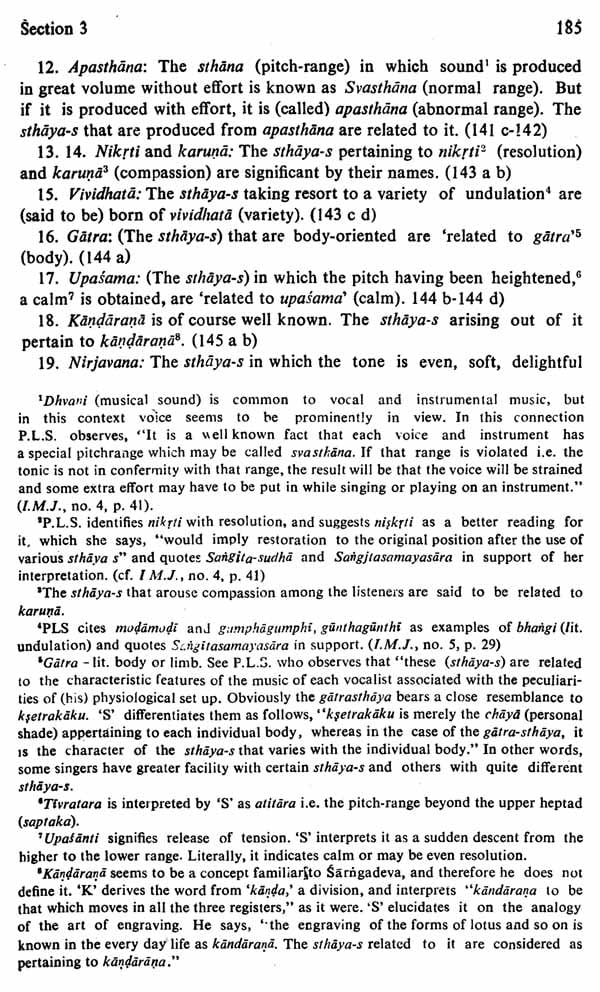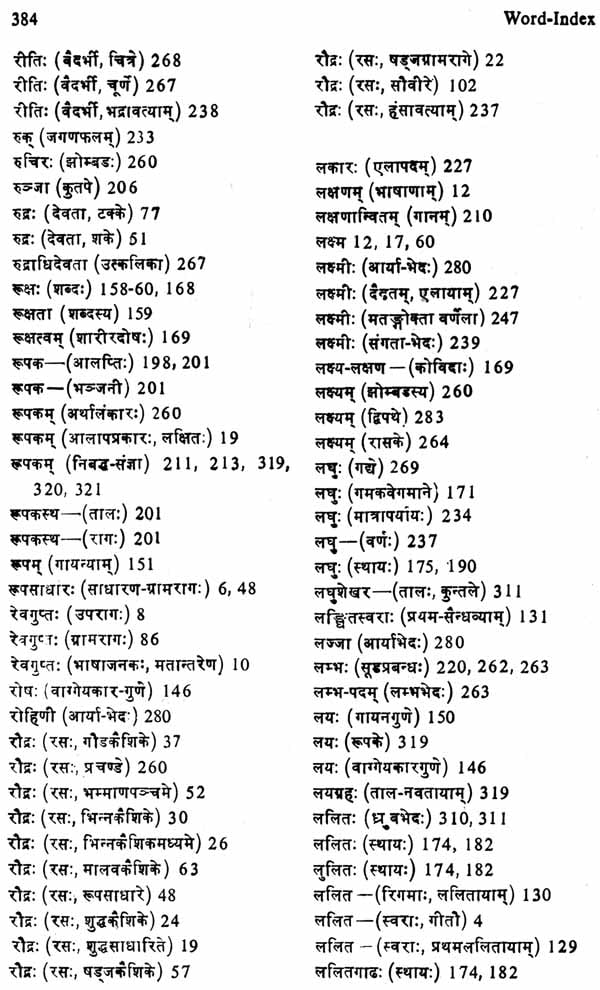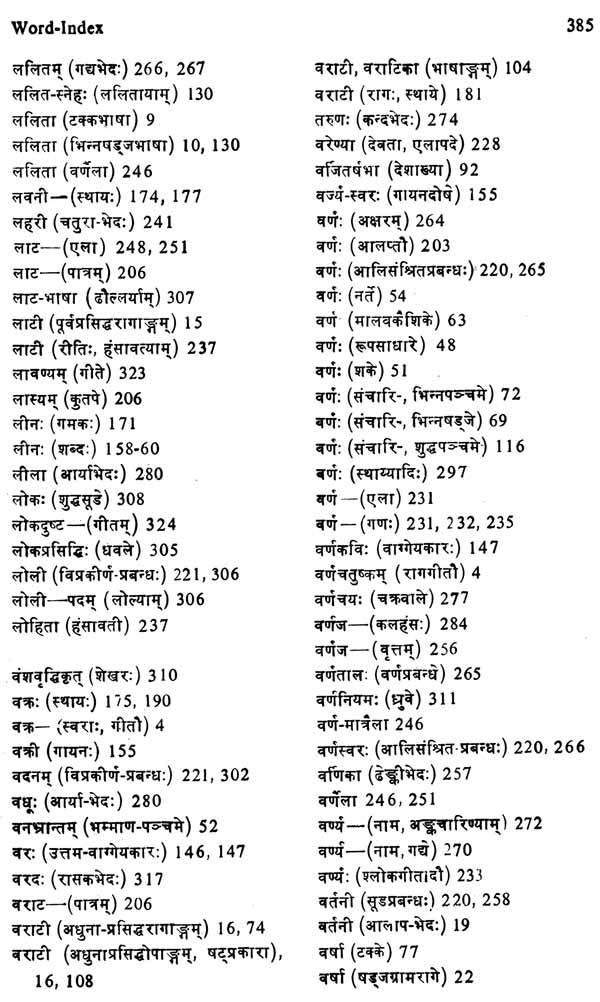
Sangitaratnakara (Sangeet Ratnakara) of Sarngadeva - Volume II.
Book Specification
| Item Code: | IMD35 |
| Author: | R.K. Shringy & Prem Lata Sharma |
| Publisher: | MUNSHIRAM MANOHARLAL PUBLISHERS PVT LTD |
| Language: | (Text and English Translation) |
| Edition: | 2018 |
| ISBN: | 812150466X |
| Pages: | 429 |
| Cover: | Hardcover |
| Other Details | 10.0" X 6.5" |
| Weight | 690 gm |
Book Description
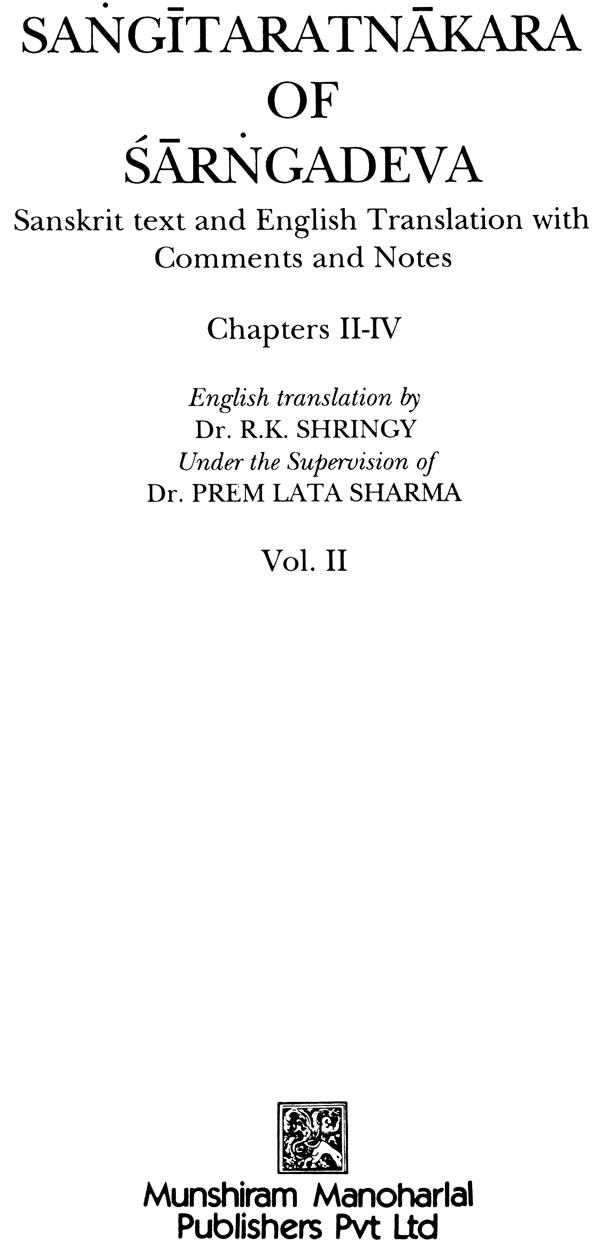
About the Book:
The present volume of the annotated translation of Sangitaratnakara contains the second, third and fourth chapters of the text dealing with raga, miscellaneous topics pertaining to vocal music and Prabandha (vocal compositional forms) respectively. These chapters deal with topics that are directly related to current practice.
The format of the first volume has been followed in this volume, except a small deviation in the word-index, where a glossary has not been attempted on account of the special nature of the terms contained in the chapters presented here. The vast expanse of terms which is mostly comprised of nomenclature of raga-s, varieties of melodic rendering, prabandha-s and tala-s prescribed therein has been thoroughly scanned and thus the index is a mirror of the totality of contents.
While the first volume was preceded by an earlier attempt at translation (without annotation), the second volume presents the above-noted three chapters in English for the first time. This long awaited volume will be a welcome addition to the primary source-material for a study of the rich textual tradition of Indian music.
About the Author:
Dr. R. K. Shringy received the degree of Doctor of Philosophy in Indian Philosophy and Religion from Banaras Hindu University in 1974. He worked as Research Assistant in the Department of Musicology, Banaras Hindu University. His published work is Philosophy of J. Krishnamurti: A systematic Study (1977, 1988). He died in 1983.
Dr. Prem Lata Sharma was Professor of Musicology, Banaras Hindu University (retired in 1987) and Vice-Chancellor, Indira Kala Sangeet Vishwavidyalaya, Khairagarh. She also published the critical editions of Rasa vilasa (1972) and Eklingamahatmyam (1976).
Prefatory Note
The second volume of the translated and annotated edition of Sangitaratnakara is being presented with a mixed feeling of sorrow and joy; sorrow due to the sad demise of Dr. R.K. Shringy in December 1983, while the book was in the press and joy because the book is at last seeing the light of the day after being in press for about six years. Scholars and students have been eagerly awaiting the second volume for ten years ever since the publication of the first volume in 1978. This volume contains the second, third and fourth chapters of the text dealing with raga-s, miscellaneous topics and prabandha-s respectively. Observations on these three chapters are presented here in the same sequence.
Raga-s
The name of the chapter dealing with raga-s is Raga-viveka i.e. discernment of raga-s and this nomenclature implies that the author felt the need of discriminating between those raga-s that were current in his times and those that had becomes obsolete. This title is justified by his treatment of this topic; he has tried to strike a balance between the dual responsibility of recording earlier tradition on the one hand and current practice on the other. Matanga's Brhaddesi is the main source of earlier material for Sarngadeva, the author of S. R. and in comparison to the former, the latter text bears the following distinctive features.
(a) While Matanga accepts seven giti-s, Sarngadeva speaks of only five, excluding Bhasa and Vibasa. This is a more rational approach because the first five giti-s stand for stylistic differences in the rendering of Grama-raga-s and Grama-raga-s are classified according to them, Bhasa-s and Vibhasa-s are derivative varieties of Grama-raga-s and hence they could not be categorised at par with the first five giti-s viz. Suddha, Bhinna, Gaudi, Raga or Vesara and Sadharani.
(b) Matanga's Br, D. describes Grama-raga-s according to their grouping under the five giti-s; i.e. Suddha, Bhinna, Gouda, Vesara and Sadharana raga-s of both the Grama-s are described in the order of the five giti-s.
S. R. follows the above scheme only partially. Seventeen Grama-raga-s i.e. three each of the Suddha, Bhinna, Gaudi and Vesara giti-s and five of the Sadharani giti are described in the accepted order. The remaining thirteen out of the thirty Grama-raga-s enumerated in S. R., 2.l.8-14, are described alongwith their derivative varieties and the order of their treatment is not in accordance with that of the giti-s or the grama-s. This treatment mixes these thirteen Grama-raga-s with two upa-raga-s which are also the origin of raganga-s (and are described at par with Grama-raga-s) as well as with bhasanga-s and bhasa-s. The author has treated these thirteen raga-s not in their own right, but as the origin of current raga-s of his times in the categories of raganga, bhasanga and upanga as well as one Bhasa and one Vibhasa. Hence their sequence is determined by the relative importance of their derivative raga-s rather than by their own positron according to giti or grama. Thus, S. R. has virtually divided the thirty Grama-raga-s handed down by textual tradition into two categories, one of those that had lost relevance in the current practice of his time and the other of those which stood out as the origin of some of the current raga-forms.
(C) S. R. adds another dimension to the description (Iaksana) of Grama-raga-s viz. the prescription of season and specific part of the day in their usage as well as devata at the esoteric level in addition to the specific juncture (sandhi) or situation of drama which was already prescribed in Br. D. Notated aksiptika-s are also added by S. R. for each Grama-raga.
(d) S. R. enumerates eight upa-raga-s, although it describes only two of them without specifying them as such. Br. D. does not mention this category; three out of these eight viz. takkasaindhava, revagupta and pancamasadava are, however, described in that text under Grama-raga-s.
(e) The section of Br, D. dealing with Deli-raga-s breaks off in its very beginning. But S. R. gives a detailed treatment of Deli-raga-s in four categories, viz. raganga, bhsanga, kriyanga and upanga. The citation from Br. D. found in Kallinatha's commentary on S. R., 2.2. I-enumerates only three categories omitting the last one viz. upanga. Thus upanga could be taken as a later addition.
(f) S. R. adds a new (unqualified) category by way of raga which is neither put under Marga nor Desi. Twenty names are given under this category, but only ten are described. Curiously enough, most of these raga-s (that are described) are derived directly from jati-s and are assigned to a specific grama. This would suggest that they were designed as being parallel to Grama-raga-s and were the product, so to say, of an attempt to retrieve a lost tradition. S. Raj., 2.2.1.20 c d-23, however, discards this category, saying that it has no specific characteristic that would justify its distinctive entity.
Transliteration Code
Abbreviations
Introduction
Acknowledgements
Detailed Contents
Sanskrit
English
The Discernment of Raga-s (Ragavivekadhyaya)
Miscellaneous Topics (Prakirnakadhyaya)
The Prabandha-s (Prabandhadhyaya)
Half-line Sloka-Index
Word-Index
